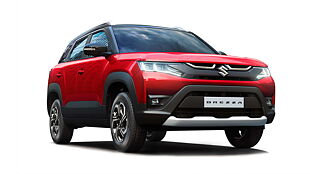What is it?

The most fuel efficient car in India, at least on paper. A minor technology update to the Ciaz diesel sedan has bumped-up the ARAI fuel efficiency by about 10 per cent to 28.09kmpl. Maruti Suzuki calls it the SHVS (Smart Hybrid Vehicle by Suzuki) technology; a simple yet ingenious way of getting a little more from the car yet making it cheaper by the means of the FAME initiative subsidy on the hybrids.
How is it on the inside?

There are no changes to the layout, just a couple of additions as part of the SHVS. A gear-shift indicator integrated into the instrument cluster, a green SHVS light that glows every time the system is at work and a switch that controls the engine start-stop function.
That said, I love the Ciaz cabin. The fit and finish is decent, it is spacious and the features list on the top-end is on par with the cars in D-Segment. The music system could have been a bit more intuitive, but that said, there is hardly anything else to complain about.
How does it drive?

The SHVS technology is limited to the diesel variants. The car gets a larger lead acid diesel battery that uses regenerative braking along with the regular alternator to charge. The bigger battery helps with the engine start-stop function and also assists the crank in generating the torque, thereby taking some load off the engine and in turn reducing the fuel consumption.
There are few prerequisites for the system to work – all the doors should be shut along with the bonnet, driver needs to wear the seat belt and like in all the start-stop systems, the ambient temperature of the cabin should be in check.
The start-stop function is effective; slot it in neutral, get off the clutch and the engine shuts off, depress the clutch pedal again and the engine comes alive almost instantly. The system is similar to the micro-hybrid used by Mahindra, only quicker. We tested the system in the Delhi traffic with an outside temperature of over 35 degrees, and it works really well. The car stopped frequently and the engine turned off every single time, and the moment we started again, the AC was effective enough to cool the cabin before the next halt. There is no reason to doubt that the Ciaz hybrid will be efficient, but we will wait for our efficiency runs to give us clarity. On the congested Delhi roads the car returned around 16kmpl.
The power figures haven’t changed, the 1.3-litre multijet still delivers 90bhp and 200Nm of torque. It feels the same to drive as well, only it probably slows down a little quicker on lift off with the regenerative braking.
Why should I buy one?

It is an all-round package. The Maruti Suzuki Ciaz always made a sound choice – looks decent, offers tons of space inside, the feature list is good as well and the Maruti badge means decent service and resale value. The new one then sounds all the more brilliant with the fact that the efficiency has improved, there is new technology in the car and also that it comes with a price cut of Rs 15,000.
Where does it fit in?

At Rs 10.18 lakh (ex-Delhi) for the top-end version, it is over Rs 1.25 lakh cheaper than similar variants of the C-Segment rivals like the Honda City and Hyundai Verna. Even the Volkswagen Vento manual costs about Rs 50,000 more and offers much less in terms of space and features.

![Maruti Suzuki Ciaz [2014-2017] Driving Maruti Suzuki Ciaz [2014-2017] Driving](https://imgd.aeplcdn.com/642x361/cw/ec/20198/Maruti-Suzuki-Ciaz-Driving-57676.jpg?v=201711021421&wm=1&q=80)
![Maruti Suzuki Ciaz [2014-2017] Right Front Three Quarter Maruti Suzuki Ciaz [2014-2017] Right Front Three Quarter](https://imgd.aeplcdn.com/642x361/cw/ec/20198/Maruti-Suzuki-Ciaz-Right-Front-Three-Quarter-57679.jpg?v=201711021421&wm=1&q=80)
![Maruti Suzuki Ciaz [2014-2017] Right Rear Three Quarter Maruti Suzuki Ciaz [2014-2017] Right Rear Three Quarter](https://imgd.aeplcdn.com/642x361/cw/ec/20198/Maruti-Suzuki-Ciaz-Right-Rear-Three-Quarter-57682.jpg?v=201711021421&wm=1&q=80)
![Maruti Suzuki Ciaz [2014-2017] Rear View Maruti Suzuki Ciaz [2014-2017] Rear View](https://imgd.aeplcdn.com/642x361/cw/ec/20198/Maruti-Suzuki-Ciaz-Rear-view-57683.jpg?v=201711021421&wm=1&q=80)
![Maruti Suzuki Ciaz [2014-2017] Rear View Maruti Suzuki Ciaz [2014-2017] Rear View](https://imgd.aeplcdn.com/642x361/cw/ec/20198/Maruti-Suzuki-Ciaz-Rear-blind-57697.jpg?v=201711021421&wm=1&q=80)
![Maruti Suzuki Ciaz [2014-2017] Left Rear Three Quarter Maruti Suzuki Ciaz [2014-2017] Left Rear Three Quarter](https://imgd.aeplcdn.com/642x361/cw/ec/20198/Maruti-Suzuki-Ciaz-left-rear-three-quarter-57681.jpg?v=201711021421&wm=1&q=80)
![Maruti Suzuki Ciaz [2014-2017] Left Side View Maruti Suzuki Ciaz [2014-2017] Left Side View](https://imgd.aeplcdn.com/642x361/cw/ec/20198/Maruti-Suzuki-Ciaz-Left-Side-View-57680.jpg?v=201711021421&wm=1&q=80)
![Maruti Suzuki Ciaz [2014-2017] Left Front Three Quarter Maruti Suzuki Ciaz [2014-2017] Left Front Three Quarter](https://imgd.aeplcdn.com/642x361/cw/ec/20198/Maruti-Suzuki-Ciaz-Left-Front-Three-Quarter-57678.jpg?v=201711021421&wm=1&q=80)
![Maruti Suzuki Ciaz [2014-2017] Image Maruti Suzuki Ciaz [2014-2017] Image](https://imgd.aeplcdn.com/272x153/cw/cars/maruti-suzuki/ciaz.jpg?q=80)























